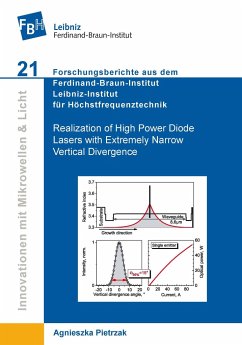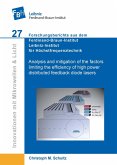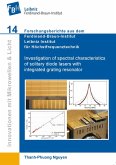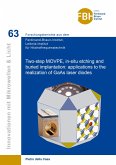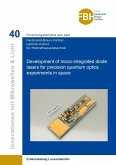The doctoral thesis deals with high power InGaAs/GaAsP/AlGaAs quantum well diode lasers grown on a GaAs substrate with emission wavelengths in the range of 1050 nm ¿ 1150 nm. The objective of this thesis is the development of diode lasers with extremely narrow vertical laser beam divergence without any resulting decrease in the optical output power compared to current state of the art devices. The work is focused on the design of the internal laser structure (epitaxial structure), with the goal of optical mode expansion (thus reduction of the beam divergence), and the experimental investigation of the electro-optical properties of the processed laser devices. Diagnosis of the factors limiting the performance is also performed. The optical mode expansion is realized by increasing the thickness of the waveguide layers. Structures with a very thick optical cavity are named in this work as Super Large Optical Cavity structures (SLOC). The vertical optical mode is modeled by solving the one-dimensional waveguide equation, and the far-field profiles are obtained from the Fourier transform of the electrical field at the laser facet (near-field). Calculations are performed by using the software tool QIP. The electro-optical properties (such as vertical electrical carrier transport and power-voltagecurrent characteristics, without self-heating effect) are simulated using the WIAS-TeSCA software. Both software tools are described in this thesis.

